
Rattanakosin: The Heart of Historic Bangkok
Discover Rattanakosin, Bangkok's Historic Heart: Explore Majestic Palaces, Iconic Temples, and Vibrant Markets in Thailand's Cultural Epicenter.
Rattanakosin, often referred to as Bangkok's Old City, is a captivating district that immerses visitors in Thailand's rich history and vibrant culture. This historic enclave is home to some of the country's most revered landmarks, including the Grand Palace, Wat Pho, and the iconic Wat Arun. As you wander through its bustling streets, you'll encounter a blend of ancient architecture, ornate temples, and lively markets that paint a vivid picture of Thailand's regal past. The Grand Palace, with its intricate craftsmanship and dazzling gold accents, stands as a testament to the grandeur of Thailand's royalty. Within its walls lies the Emerald Buddha, a revered statue that attracts pilgrims from far and wide. Nearby, Wat Pho houses the famous Reclining Buddha, a massive 46-meter-long statue that beautifully illustrates the serene nature of Buddha's final moments. The temple complex also offers traditional Thai massage services, providing a perfect blend of cultural exploration and relaxation. Wat Arun, or the Temple of Dawn, is another must-visit in Rattanakosin. Situated along the Chao Phraya River, its towering spires offer a breathtaking view, especially during sunrise and sunset. Climb to the top for a panoramic view of the river and the city beyond. As you explore the area, don't miss the chance to visit the nearby Tha Tien Market, where you can sample local delicacies and shop for unique souvenirs. Rattanakosin is not just about its temples and palaces; it's also a hub for understanding Thai culture through its museums and galleries. The Bangkok National Museum provides a comprehensive overview of Thai history and art, while the Queen Sirikit Museum of Textiles showcases exquisite traditional garments. As evening falls, take a leisurely stroll along the Sanam Luang park, where locals gather for picnics and outdoor activities, offering a glimpse into daily life in Bangkok.
Local tips in Rattanakosin
- Wear modest clothing when visiting temples; shoulders and knees should be covered.
- Visit early in the morning to avoid crowds and the midday heat.
- Use the Chao Phraya River Express boats for a scenic and efficient way to explore the area.
- Carry cash, as many small vendors and markets do not accept credit cards.
- Check the opening hours of attractions in advance, as they can vary.
Rattanakosin: The Heart of Historic Bangkok
Rattanakosin, often referred to as Bangkok's Old City, is a captivating district that immerses visitors in Thailand's rich history and vibrant culture. This historic enclave is home to some of the country's most revered landmarks, including the Grand Palace, Wat Pho, and the iconic Wat Arun. As you wander through its bustling streets, you'll encounter a blend of ancient architecture, ornate temples, and lively markets that paint a vivid picture of Thailand's regal past. The Grand Palace, with its intricate craftsmanship and dazzling gold accents, stands as a testament to the grandeur of Thailand's royalty. Within its walls lies the Emerald Buddha, a revered statue that attracts pilgrims from far and wide. Nearby, Wat Pho houses the famous Reclining Buddha, a massive 46-meter-long statue that beautifully illustrates the serene nature of Buddha's final moments. The temple complex also offers traditional Thai massage services, providing a perfect blend of cultural exploration and relaxation. Wat Arun, or the Temple of Dawn, is another must-visit in Rattanakosin. Situated along the Chao Phraya River, its towering spires offer a breathtaking view, especially during sunrise and sunset. Climb to the top for a panoramic view of the river and the city beyond. As you explore the area, don't miss the chance to visit the nearby Tha Tien Market, where you can sample local delicacies and shop for unique souvenirs. Rattanakosin is not just about its temples and palaces; it's also a hub for understanding Thai culture through its museums and galleries. The Bangkok National Museum provides a comprehensive overview of Thai history and art, while the Queen Sirikit Museum of Textiles showcases exquisite traditional garments. As evening falls, take a leisurely stroll along the Sanam Luang park, where locals gather for picnics and outdoor activities, offering a glimpse into daily life in Bangkok.
Iconic landmarks you can’t miss
The Grand Palace
Discover the majestic beauty and rich history of The Grand Palace in Bangkok, a stunning cultural landmark and a must-visit tourist attraction.

Wat Suthat Thep Wararam Ratchaworamahawihan
Discover the spiritual heart of Bangkok at Wat Suthat Thep Wararam, a stunning Buddhist temple with intricate architecture and tranquil surroundings.

Rattanakosin Exhibition Hall
Explore the vibrant history of Bangkok at the Rattanakosin Exhibition Hall, a museum that brings the Rattanakosin Era to life through immersive exhibits and culture.

Phra Sumen Fort
Explore the historical charm of Phra Sumen Fort, a captivating landmark in Bangkok that offers scenic views and a glimpse into Thailand's past.

Ong Ang Canal
Discover the tranquil beauty of Ong Ang Canal, a scenic waterway in Bangkok where history meets local culture amidst vibrant street life.

Pig Memorial
Discover the charming Pig Memorial in Bangkok, a unique monument celebrating the cultural significance of pigs in Thai heritage and cuisine.

Statue of King Rama III
Explore the Statue of King Rama III, a stunning monument reflecting Thailand's royal legacy and cultural vibrancy in the heart of Bangkok.

Ancient City Wall
Discover Bangkok's rich history at the Ancient City Wall, a stunning historical landmark showcasing impressive fortifications and vibrant local culture.

Rattanakosin Island
Discover Rattanakosin Island, Bangkok’s cultural treasure, featuring stunning temples, the Grand Palace, and a vibrant blend of history and local life.

Pi Kun Bridge
Explore the historical significance and stunning architecture of Pi Kun Bridge, a must-see landmark in the heart of Bangkok's vibrant culture.
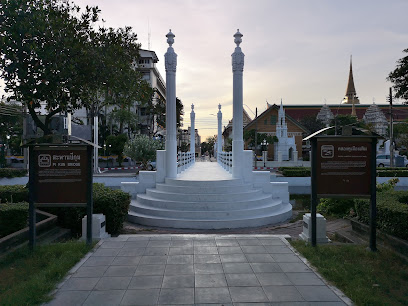
Royal Hall of Piman Rattaya
Explore the Royal Hall of Piman Rattaya, a captivating historical site in Bangkok, showcasing exquisite Thai architecture and royal heritage.

Unmissable attractions to see
Bangkok City Pillar Shrine
Discover the cultural heart of Bangkok at the breathtaking City Pillar Shrine, a sacred site rich in history and stunning architecture.

Wat Suthat Thep Wararam Ratchaworamahawihan
Explore the beauty and serenity of Wat Suthat Thep Wararam, a magnificent Buddhist temple in Bangkok, showcasing rich culture and stunning architecture.

Museum Siam
Explore the rich heritage of Thailand at Museum Siam, where interactive exhibits bring history and culture to life in the heart of Bangkok.

Rattanakosin Exhibition Hall
Discover Thailand's rich heritage at the Rattanakosin Exhibition Hall, where history comes alive through interactive exhibits and immersive experiences.

The Giant Swing
Experience Bangkok's rich heritage at The Giant Swing, a cultural landmark symbolizing Thai traditions and history.

Phra Sumen Fort
Immerse yourself in the historical allure of Phra Sumen Fort, a captivating landmark in Bangkok showcasing Thailand's rich heritage.

Statue of King Rama III
Explore the Statue of King Rama III, a monumental tribute to Thailand's rich history and royal heritage, located in the heart of Bangkok.

Royal Hall of Piman Rattaya
Discover the Royal Hall of Piman Rattaya in Bangkok, a stunning testament to Thailand's rich cultural heritage and exquisite architectural design.

Essential places to dine
Pad Thai Kratong Thong
Discover authentic Thai flavors at Pad Thai Kratong Thong, where tradition meets taste in every delicious bite.

The Family
Discover authentic Thai cuisine at The Family in Bangkok - where delicious flavors meet warm hospitality in an inviting atmosphere.
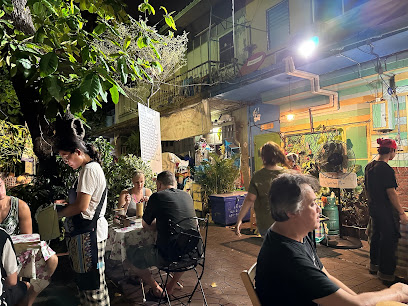
sala rattanakosin Bangkok
Experience authentic Thai cuisine with stunning views at Sala Rattanakosin Bangkok - where tradition meets modern luxury.

Eat Sight Story Deck
Experience exquisite Asian Fusion cuisine with stunning views at Eat Sight Story Deck in Bangkok's vibrant heart.

Mit Ko Yuan Restaurant
Experience the rich flavors of authentic Thai cuisine at Mit Ko Yuan Restaurant in Bangkok's vibrant Sao Chingcha district.

All Meals Sawasdee
Experience a unique blend of traditional Thai flavors and innovative vegetarian dishes at All Meals Sawasdee in Bangkok.

Sae Phun
Discover authentic Thai cuisine at Sae Phun in Bangkok, where every dish is a celebration of flavor and tradition.

Nusara - นุสรา
Experience exquisite Thai cuisine at Nusara in Bangkok - where tradition meets innovation for an unforgettable dining adventure.

Aroi Vegetarian Food
Discover Aroi Vegetarian Food in Bangkok – where vibrant flavors meet healthy living through delicious plant-based cuisine.
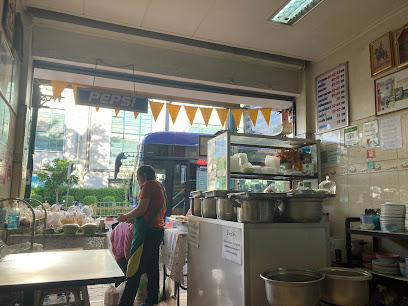
sala rattanakosin eatery and bar
Experience exquisite Thai cuisine with stunning views at Sala Rattanakosin Eatery and Bar in Bangkok.
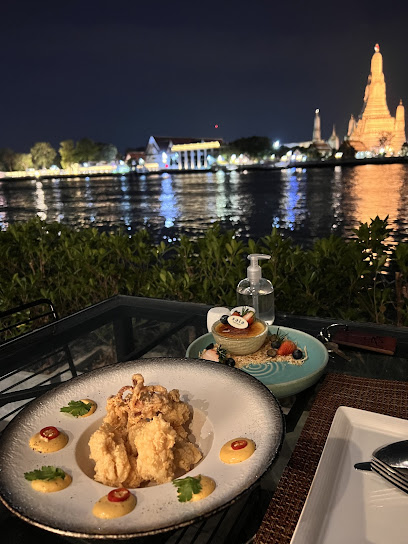
Markets, malls and hidden boutiques
The Platinum Fashion Mall
Discover the ultimate shopping destination at The Platinum Fashion Mall in Bangkok, where fashion meets fantastic deals.

The Old Siam Plaza
Experience the rich blend of modern shopping and traditional Thai culture at The Old Siam Plaza in Bangkok.

Indra Square
Discover the vibrant shopping experience at Indra Square, Bangkok’s iconic mall with unique local finds and delicious street food.

Kon Fai
Discover unique Thai souvenirs at Kon Fai, a charming store at Asiatique the Riverfront, offering local craftsmanship and a taste of culture.

RASHNI COLLECTIONS Indian Clothing Store, ร้านเสื้อผ้าอินเดีย
Discover the essence of Indian fashion at Rashni Collections in Bangkok, where tradition meets modern style in an exquisite clothing experience.
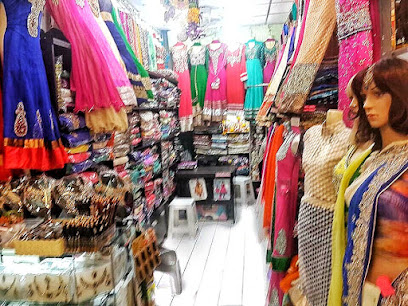
Siam Exotique
Discover the essence of Thailand at Siam Exotique, your go-to souvenir store for authentic Thai crafts and unique treasures.

Unique Boutique Indian Emporium
Explore authentic Indian fashion at the Unique Boutique Indian Emporium in Bangkok, a vibrant store filled with colorful attire and accessories.
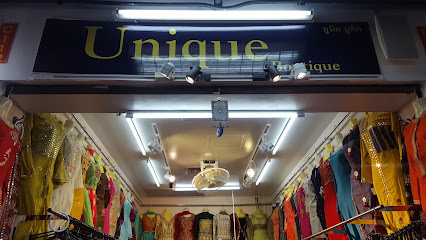
พิจิตรพุทธปฏิมา
Explore Phichit Buddha Patima, a serene Buddhist supplies store in Bangkok, where spirituality and culture intertwine beautifully.

Pelican Case Thailand Official Store by Guncase Co.,Ltd
Explore Pelican Case Thailand, the ultimate destination for high-quality gun cases and accessories in the heart of Bangkok.

Unique Merchandise
Explore Unique Merchandise in Bangkok, a delightful gift shop and antique store offering authentic Thai souvenirs and treasures.

Essential bars & hidden hideouts
Eagle Nest Bar
Discover the vibrant atmosphere and stunning views at Eagle Nest Bar, a must-visit nightlife destination in Bangkok.

Mulligans Irish Bar | Khaosan road
Discover Mulligans Irish Bar on Khaosan Road, where vibrant nightlife meets authentic Irish cuisine in the heart of Bangkok.

Buddy Beer Wine Bar & Grill
Experience the vibrant atmosphere of Buddy Beer Wine Bar & Grill, where delicious food meets an extensive drink menu in the heart of Bangkok's nightlife.

Swing Bar by ChingCha
Experience Bangkok's vibrant nightlife at Swing Bar by ChingCha, a rooftop paradise offering stunning views and innovative cocktails.

Moonshine Bar
Experience Bangkok's nightlife at Moonshine Bar, where craft cocktails and delicious food meet a vibrant atmosphere in the heart of the city.

Rooftop Bar at sala rattanakosin Bangkok
Discover the Rooftop Bar at sala rattanakosin, where breathtaking views of Bangkok's skyline and the Chao Phraya River meet exquisite cocktails and ambiance.
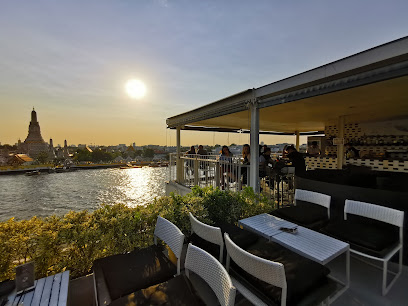
Sanay Rooftop Bar - เสน่ห์ รูฟท็อป บาร์
Experience the breathtaking skyline of Bangkok at Sanay Rooftop Bar, where vibrant nights meet stunning views and live music.

The ROOF(Rooftop Bar)
Experience breathtaking views and refreshing cocktails at The ROOF Rooftop Bar in Bangkok, where sky-high relaxation meets vibrant city life.

Nuss Bar
Experience the vibrant cocktail culture of Bangkok at Nuss Bar, where every sip is a celebration of flavor and creativity.

Holy beer (best place in earth)
Discover the vibrant nightlife at Holy Beer, a top bar in Bangkok where locals and tourists unite for great drinks and unforgettable memories.

Local Phrases
-
- Helloสวัสดี
[sawasdee] - Goodbyeลาก่อน
[la kon] - Yesใช่
[chai] - Noไม่ใช่
[mai chai] - Please/You're welcomeโปรด/ยินดี
[prode/yindee] - Thank youขอบคุณ
[kop khun] - Excuse me/Sorryขอโทษ
[khor thot] - How are you?สุขสบายไหม
[suk sabai mai] - Fine. And you?สบายดีค่ะ คุณล่ะ
[sabai dee ka kun la] - Do you speak English?คุณพูดภาษาอังกฤษได้ไหม
[kun poot phasa angkrit dai mai] - I don't understandฉันไม่เข้าใจ
[chan mai khao jai]
- Helloสวัสดี
-
- I'd like to see the menu, pleaseขอดูเมนูหน่อยค่ะ
[khor doo menu noi ka] - I don't eat meatฉันไม่กินเนื้อ
[chan mai gin nuea] - Cheers!ชนแก้ว
[chon kaew] - I would like to pay, pleaseฉันต้องการจ่ายเงินค่ะ
[chan tong kan chai ngern ka]
- I'd like to see the menu, pleaseขอดูเมนูหน่อยค่ะ
-
- Help!ช่วยด้วย
[chuai duay] - Go away!ไปข้างหน้า
[pai kang na] - Call the Police!โทรตำรวจ
[thor tamruat] - Call a doctor!โทรหมอ
[thor mo] - I'm lostฉันหลงทาง
[chan long tang] - I'm illฉันไม่สบาย
[chan mai sabai]
- Help!ช่วยด้วย
-
- I'd like to buy...ฉันอยากซื้อ...
[chan yak sue...] - I'm just lookingฉันแค่ดู
[chan kae doo] - How much is it?ราคาเท่าไหร่
[ra ka thao rai] - That's too expensiveแพงเกินไป
[paeng kuen pai] - Can you lower the price?ลดราคาได้ไหม
[lot ra ka dai mai]
- I'd like to buy...ฉันอยากซื้อ...
-
- What time is it?กี่โมงแล้ว
[gee mong laew] - It's one o'clockเที่ยง
[thiang] - Half past (10)สามทุ่มครึ่ง
[sam thum khreung] - Morningเช้า
[chao] - Afternoonบ่าย
[bai] - Eveningเย็น
[yen] - Yesterdayเมื่อวาน
[meua wan] - Todayวันนี้
[wan nee] - Tomorrowพรุ่งนี้
[phrung nee] - 1หนึ่ง
[neung] - 2สอง
[song] - 3สาม
[sam] - 4สี่
[see] - 5ห้า
[ha] - 6หก
[hok] - 7เจ็ด
[jet] - 8แปด
[paet] - 9เก้า
[kao] - 10สิบ
[sip]
- What time is it?กี่โมงแล้ว
-
- Where's a/the...?...อยู่ที่ไหน
[...yu tee nai] - What's the address?ที่อยู่คืออะไร
[tee yu keu arai] - Can you show me (on the map)?แสดงให้ดูหน่อย
[saeng hai doo noi] - When's the next (bus)?รถเมลล่าถัดไปเวลาเท่าไหร่
[rote mel la that pai welaa thao rai] - A ticket (to ....)ตั๋ว (ไป...)
[dtua (pai...)]
- Where's a/the...?...อยู่ที่ไหน
History of Rattanakosin
-
Rattanakosin was founded in 1782 when King Rama I moved the capital of the Kingdom of Siam from Thonburi across the Chao Phraya River. This marked the beginning of the Rattanakosin Era, which saw significant urban planning and the establishment of important structures, including the Grand Palace and Wat Phra Kaew, the Temple of the Emerald Buddha, making it the political and spiritual center of Thailand.
-
Throughout the 19th century, Rattanakosin became a hub for cultural and artistic development as the Chakri Dynasty embraced modernization while preserving traditional Thai culture. The area saw the construction of many temples and monuments, reflecting a blend of traditional Thai architecture with Western influences, symbolizing the nation's transition into the modern age.
-
In the late 19th century, under King Chulalongkorn (Rama V), Rattanakosin underwent substantial reforms aimed at modernization, including the establishment of a constitutional monarchy. The king's efforts to reform the education and legal systems were crucial in positioning Thailand as a sovereign nation amid colonial pressures in Southeast Asia.
-
During World War II, Bangkok, including Rattanakosin, was occupied by Japanese forces, which had significant economic and social impacts. Post-war, the area became a focal point for political movements, including the 1932 Siamese Revolution, which transitioned the country from an absolute to a constitutional monarchy, influencing the political landscape of modern Thailand.
-
Today, Rattanakosin is recognized for its rich history and cultural significance. The neighborhood is home to numerous historical sites, attracting both domestic and international tourists. Preservation efforts have been implemented to maintain the area's architectural heritage, highlighting its importance as a symbol of Thai identity and history.
Rattanakosin Essentials
-
Rattanakosin is easily accessible from various parts of Bangkok. The nearest BTS Skytrain station is Sanam Chai, located just outside the Grand Palace. From Sukhumvit or Silom areas, you can take the BTS to Saphan Taksin, then transfer to a Chao Phraya Express Boat to Tha Chang Pier, which is a short walk to the Grand Palace. Alternatively, taxis and tuk-tuks are available throughout the city, but be prepared for potential traffic delays.
-
Rattanakosin is a compact neighbourhood, making it convenient to explore on foot. Major attractions like the Grand Palace, Wat Pho, and Wat Arun are within walking distance. For longer distances, consider using the Chao Phraya Express Boat, which offers a scenic route along the river. Local tuk-tuks and taxis are available, but negotiate the fare beforehand. Bicycle rentals are also an option for a more local experience, although traffic can be challenging.
-
Rattanakosin is generally safe for tourists, but standard precautions should be taken. Avoid walking alone late at night in less crowded areas, particularly around Khao San Road, which can attract petty crime. Keep your belongings secure and be cautious of scams, especially around major tourist sites. While violent crime is rare, it’s advisable to stay alert in crowded markets and public transport.
-
In case of emergency, dial 191 for police assistance or 1669 for medical emergencies. There are hospitals and clinics nearby, such as Siriraj Hospital. Always carry a copy of your passport and travel insurance details. For minor ailments, local pharmacies can provide over-the-counter medications and advice.
-
Fashion: Do dress modestly, particularly when visiting temples; shoulders and knees should be covered. Don't wear revealing clothing. Religion: Do respect religious customs; remove shoes when entering temples. Don't take pictures in restricted areas. Public Transport: Do be courteous and give up your seat to the elderly or pregnant women. Don't eat or drink on public transport. Greetings: Do greet locals with a slight bow and a smile. Don't engage in overly loud or disruptive behaviour. Eating & Drinking: Do try local street food and eat at establishments with high turnover for freshness. Don't drink alcohol in public places outside designated areas.
-
To experience Rattanakosin like a local, visit street food stalls and local markets, such as the Bang Lamphu area, for authentic Thai cuisine. Engage with local artisans and shop for handmade souvenirs. Attend a traditional Thai dance or music performance at venues nearby. For a unique perspective of the area, take a boat ride along the canal systems, known as 'khlongs,' which reveal a different side of Bangkok.
Nearby Cities to Rattanakosin
-
Things To Do in Samut Prakan
-
Things To Do in Ayutthaya
-
Things To Do in Pattaya
-
Things To Do in Kanchanaburi
-
Things To Do in Hua Hin
-
Things To Do in Rayong
-
Things To Do in Nakhon Ratchasima
-
Things To Do in Trat
-
Things To Do in Battambang
-
Things To Do in Koh Kong
-
Things To Do in Siem Reap
-
Things To Do in Sukhothai
-
Things To Do in Chumphon
-
Things To Do in Loei
-
Things To Do in Koh Rong













